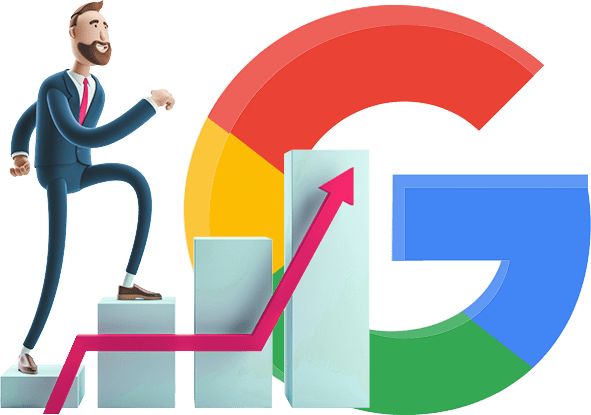Increase Organic Traffic: SEO Pillar Techniques for Success
When it comes to increasing organic traffic, many business owners may feel lost in the vast sea of SEO strategies and tactics.
“If I use popular keywords and maintain an active social media presence, surely that will drive organic traffic to my site,” some might say.
If only it were that simple…
In reality, effectively increasing organic traffic requires a comprehensive approach – from producing quality content and optimizing page titles & descriptions to building quality backlinks and reducing website load time.
Gaining top positions on search engines such as Google necessitates more than simply employing trendy keywords; it calls for a comprehensive strategy.
According to Google Analytics, referral traffic can also play a significant role in driving visitors to your site. But how do you ensure these referrals are high-quality?
The answer lies within this guide. Today we’re diving deep into proven methods for not just increasing organic traffic but ensuring this growth is sustainable over time.
Ready? Let’s get started…
Table of Contents
Identifying the Right Keywords
Beginning with the basics, it is essential to identify the appropriate keywords for SEO. The first step in SEO is identifying the right keywords.
These are not just random words but those that best represent your niche.
Your mission? To create content around these keywords to fuel your search engine ranking and attract a relevant audience.
Sounds simple enough, right?
Understanding Keyword Relevance for Business Niches
The trick here is understanding keyword relevance for business niches.
It’s like finding a secret passageway to your customer’s minds – you need to think about what they’re searching for when they stumble upon your site.
This guide on keyword research can help you unlock this mystery.
Common Mistakes Made During Keyword Selection
Moving on, let’s talk about some common mistakes made during keyword selection.
One of them is targeting high-volume keywords without considering if they align with what you offer.
This might seem like an excellent strategy initially (who doesn’t want more traffic?), but it can lead to attracting irrelevant traffic.
And trust me, no one wants visitors who bounce faster than a rubber ball.
Producing Relevant Content
To increase organic traffic, we need to produce content that’s informative and highly relevant to our audience – because Google loves nothing more than quality content that caters well to its users’ needs.
The Importance of Creating Detailed Query-Solving Content
We must focus on creating detailed query-solving content – kind of like becoming the Sherlock Holmes of our industry.
Our goal should be to answer all possible questions related to our products or services through engaging and valuable articles or blogs.
(Pro tip: Check out AnswerThePublic tool)
Straight Strategies For Surpassing Competition Through Quality Content
Last up, strategies to surpass competition through quality content.
Remember, it’s not always quantity that wins the race; sometimes, slow and steady does indeed win the race.
So take time to craft top-notch pieces that truly provide value to readers and leave competitors in the dust.
Key Takeaway: This content provides tips for increasing organic traffic through advanced SEO methods such as identifying the right keywords, understanding keyword relevance for business niches, avoiding common mistakes during keyword selection, producing relevant and detailed query-solving content, and surpassing competition through quality content. The key takeaway is to focus on creating high-quality and informative content that caters well to users’ needs rather than targeting high-volume keywords without considering their alignment with what you offer.
Producing Relevant Content
Content is king, but not all content wears the crown.
To boost your organic traffic, you must craft content that is meaningful and pertinent to your target audience.
Here’s how you can make your content reign supreme:
Importance of Creating Detailed Query-Solving Content
Solve Real Problems
Your audience has questions, and they’re looking for answers.
Don’t just provide information; solve their problems. If a blog post titled “5 Ways to Improve SEO” exists, publish one with “10 Proven Strategies to Skyrocket Your SEO”.
Strategies for Surpassing Competition Through Quality Content
Add Value Beyond What Exists
If there are already numerous articles on ‘How to start an online business,’ add value by creating a comprehensive guide or an infographic summarizing key points.
Optimizing Page Titles & Descriptions
Let’s talk about page titles and descriptions. They’re like the window display of your online store – if they don’t grab attention, no one’s coming in.
The first step to mastering this art is understanding its importance.
So let’s dive right into it:
Ideal length for optimized page titles
Your page title should be a sweet spot between informative and concise, typically falling within the 50-60 character range.
Too short, and you might not fully convey what your content offers; too long, and Google will cut it off mid-sentence (awkward.).
Crafting compelling descriptions
Description tags are where you can really sell your content. You’ve got around 150-160 characters to convince searchers that clicking on your link is worth their time.
Note:
- Avoid keyword stuffing – trust me, Google hates it as much as we do.
- Make sure each description accurately represents the corresponding webpage – misleading users isn’t just bad manners; it’s also bad SEO.
Moving forward with these best practices under our belt…
Action Steps: Creating Killer Page Titles & Descriptions
- Analyze Your Keywords: Identify which keywords are most relevant to your business and ensure they’re included in both title and description tags. Ahrefs’ guide on Keyword Research could come in handy here.
- Create Unique Tags for Each Page: Duplicate tags across multiple pages? Big no-no. Ensure every single page has a unique title and meta description.
- User Intent Focus: Always keep user intent at the forefront when crafting these elements. What would someone searching for this keyword want to see?
- Spy On Competitors: Check out how competitors have crafted their own tags. Not saying copy them, but…inspiration never hurt anyone. Try using tools like SpyFu.
- Trial And Error: Don’t be afraid to experiment with different phrasing or structures until you find what works best for you.
Remember, folks – SEO isn’t an overnight game; patience is critical.
Key Takeaway: This section discusses the importance of optimizing page titles and descriptions for SEO purposes. It emphasizes the ideal length for page titles, crafting compelling descriptions, and avoiding keyword stuffing while accurately representing each webpage. The article also provides action steps to create killer page titles and descriptions, such as analyzing keywords, creating unique tags for each page, focusing on user intent, spying on competitors’ tags, and experimenting with different phrasing or structures until finding what works best.
Image Optimization Techniques
The value of an image in SEO terms is immense; it can be a powerful tool for boosting search engine rankings.
Let’s dive into how you can make your images sing.
Title Creation for Images:
The first step is creating an image title that grabs attention and tells search engines what it’s about.
Think of it as naming a newborn baby – you want something unique but relevant.
If your image shows a golden retriever playing fetch on a sunny day at the park, don’t just name it “dog.jpg.” Try something like “Golden_Retriever_Playing_Fetch_Sunny_Park.jpg.” It’s descriptive and keyword-rich.
Note: Keep titles concise yet meaningful – no need for an epic novel here.
Utilization of Alt Text Description:
The alt text description is another essential part of optimizing images. This little gem helps visually impaired users understand what the image represents while also giving search engines more context about your content.
Your alt text should be short (around 125 characters) and describe exactly what’s happening in the picture. Using our previous example, good alt text might be “A happy Golden Retriever fetching a ball in a sunny park.”
Avoid Crowded Pictures:
Crowded pictures are confusing not only to viewers but also to Google’s algorithms.
Stick with clean compositions that clearly depict one main subject or idea per image.
Remember: simplicity is key when trying to communicate effectively through visuals.
High-Resolution Yet Appropriately Sized Images:
We all love high-resolution photos because they look stunningly sharp…until they slow down page load times drastically.
The trick lies in finding a balance between quality resolution size manageable enough not to affect site speed adversely.
In summary,
Treating each component of image optimization seriously pays off dividends in the long run, helping leverage the power of visual searches to drive organic traffic to your website in ways you never imagined possible.
So go ahead and start making those tweaks today and see the difference for yourself.
Key Takeaway: This section provides tips on how to optimize images for SEO, including creating descriptive titles and alt text descriptions, avoiding crowded pictures, and balancing high-resolution with appropriate image sizes. By implementing these techniques, businesses can increase their organic traffic through visual searches.
Effective Use of Internal Links
Let’s get this straight: internal links are your secret weapon in the SEO battle.
So, why are internal links so crucial for SEO?
The Role Internal Linking Plays in Enhancing User Experience
User Experience (UX)
Your website is a labyrinth.
And like any good maze runner, users need a guide to navigate through it.
That’s where internal links come into play.
A well-placed link can lead visitors from one page to another seamlessly, making their journey smoother and more enjoyable.
The Impact Incorrect Linking Errors Have on SEO
The Downside of Incorrect Linking
Messy linking practices can turn your site into an impenetrable jungle rather than an easy-to-navigate garden.
Broken or irrelevant links not only frustrate users but also make search engines question your credibility.
Action Steps:
1. Analyze Your Current Link Structure:
- If you’re using WordPress, consider installing plugins like Broken Link Checker. They help identify broken or dead-end links that might hurt your SEO game.
2. Create a Logical Hierarchy:
- Your website should flow logically from general content to specific information. Think of it as creating chapters for a book – each link leading the reader deeper into the story.
3. Add Relevant Internal Links to New Content:
- A new blog post? Great. Now sprinkle some relevant internal links throughout the text – just don’t overdo it. The key here is relevance; forcing unrelated links could backfire big time.
4. Frequently Update Old Posts with New Links:
- Don’t let old posts gather dust in archives. Regularly updating them with new internal links gives them fresh life and keeps traffic flowing within your site.
URL Optimization Practices
Let’s talk about URLs.
They’re like the GPS coordinates of your web pages, guiding both users and search engines to the right destination.
The Art of Crafting a URL
A well-constructed URL is not just a location – it concisely explains what website visitors can anticipate on that page.
And guess what? It also aids in improved SERP positioning compared to longer, disorganized URLs.
So, how can one create such a magical URL?
Constructing Logically Structured, Concise, Keyword-Optimized URLs
The first step is a logical structure.
Think breadcrumbs from Hansel and Gretel – each part should lead naturally to the next.
For example, www.yoursite.com/category/subcategory/page-title.
Moving onto conciseness…
A good rule of thumb here is KISS (Keep It Short & Simple).
Avoid unnecessary words or numbers that don’t contribute value to understanding your content.
Last but not least, keywords.
Including relevant keywords in your URL helps signal its content to search engines (and humans).
But remember, folks; this isn’t a license for keyword stuffing.
Action Steps:
- Create a logical structure for your website’s hierarchy.
- Simplify your URLs by removing unnecessary words or numbers.
- Add relevant keywords into your URLs without overdoing it (Google doesn’t appreciate Keyword Stuffing).
Changing existing URLs can cause broken links if not handled correctly with proper redirects.
So there you have it – crafting the perfect SEO-friendly URL isn’t rocket science after all.
Remember these tips when creating new pages or revisiting old ones.
And remember, much like real estate, location matters in SEO, too; where you place those keywords within the URL counts as well.
Happy optimizing.
Reducing Website Load Time
Your website’s load time is like the waiting line at a theme park.
Delays can cause potential visitors to turn away, and Google won’t tolerate slow-loading websites.
And just like that impatient kid in line, Google ain’t got no time for slow websites.
Diagnosing and Fixing Common Causes of Slow Website Load Time
If your site is slower than a snail on sedatives, there could be several culprits to blame.
But don’t worry – we’ve got some quick fixes up our sleeves.
First off, check out Google PageSpeed Insights. Check out Google PageSpeed Insights to discover precisely what is causing your website to be sluggish, so you can directly address those issues.
Dense Code? Slim It Down.
A dense code is like trying to read an academic paper when all you want are the cliff notes.
Simplify. Use minification tools such as JSCompress or CSS Minifier.
Bulky Images? Shrink ‘Em.
Giant images are great for detail but terrible for speed. Compress them using tools like TinyPNG.
TinyPnG is the tool used by Top Click Joe
Javascript Issues? Tidy Up.
If Javascript were a party guest, he’d be one who leaves his stuff everywhere.
Clean up after him by deferring non-critical JS.
In short, think of your website as a high-speed train.
Every extra bit of weight slows it down, so get rid of anything unnecessary.
Remember: A faster site equals happier visitors and higher rankings.
So let’s make sure yours isn’t stuck in the slow lane.
Building Quality Backlinks
When it comes to SEO, backlinks are like gold dust.
But not all that glitters is gold.
Let’s talk about earning backlinks from reputable sites and avoiding toxic ones.
Avoidance Strategies for Harmful Link Building Methods
Toxic links can be as deadly as a rattlesnake in your sleeping bag.
You need to dodge these bad boys like Neo dodges bullets in The Matrix.
They’re spammy, irrelevant, non-indexed, or sponsored links that can harm your website’s reputation faster than you can say “Google penalty.”
The first step? Know what they look like:
- Sponsored Links: These are paid-for placements on other websites. Google doesn’t appreciate them unless properly tagged with the ‘rel=”sponsored”‘ attribute.
- Irrelevant Links: If you sell pet food but get a backlink from an automobile site – red flag. It makes no sense contextually, and search engines know it.
- Non-Indexed Sites: If a site isn’t indexed by Google, it means one thing: Google doesn’t trust it. And if Big G doesn’t trust them, neither should you.
Your best defense against toxic links is regular audits using tools such as SEMrush, Ahrefs, or Moz Link Explorer.
Earning High-Quality Backlinks
If toxic links are venomous snakes, then high-quality backlinks are golden geese – they lay the eggs of authority for your niche and boost keyword rankings.
- Create compelling content that others want to reference (the good old ‘content is king’ strategy).
- Pitch guest posts to relevant blogs in your industry; this gives value both ways – they get great content while you earn quality backlink(s).
- Influencer outreach works wonders too. Engage with influencers within your niche on social media platforms and see if there’s scope for collaboration (and those precious backlinks.).
- Last but not least, consider the broken link-building method, where you replace dead external links on other sites’ pages with working ones leading to yours. This way, everyone wins.
Remember, folks, aim for quality over quantity when it comes to earning those shiny golden goose egg-like backlinks.
Key Takeaway: The content discusses the importance of building quality backlinks for SEO and how to avoid harmful link-building methods such as sponsored, irrelevant, and non-indexed links. It also provides strategies for earning high-quality backlinks through creating compelling content, guest posting on relevant blogs, influencer outreach, and broken link building. The key takeaway is to prioritize quality over quantity when it comes to earning valuable backlinks.
FAQs in Relation to Increase Organic Traffic
“`HTML
Want to increase your website’s organic traffic?
Focus on identifying the right keywords, creating relevant content, optimizing page titles and descriptions, using effective internal linking strategies, reducing website load time, and building quality backlinks.
Improved search engine rankings can lead to an increase in organic traffic, which can be achieved through successful SEO efforts such as optimized content creation, efficient keyword usage, faster website speed, and high-quality backlink acquisition.
Looking to increase organic traffic in 2023?
Stick to traditional SEO practices like keyword optimization and link-building, but also focus on emerging trends like voice search optimization and mobile-first indexing.
The ideal growth rate for your site’s organics depends on various factors, including industry standards and competition level, but an average monthly growth rate of around 10%-20% is considered healthy in most sectors.
Stay away from paid traffic or PPC campaigns, black hat SEO techniques, irrelevant topics unrelated to organic traffic increase, personal opinions or experiences, and unproven theories or strategies.
For more information on keyword research, check out Moz’s beginner’s guide to SEO.
“`
Conclusion
Are you tired of boring, generic content that doesn’t rank well on Google?
- Well, you’re in luck because I’m here to help you create content that not only entertains but also ranks high on search engines.
- One way to do this is by adding new and valuable information that hasn’t been mentioned before.
- Another way is by injecting your personal opinions or experiences into your writing to make it more relatable and engaging.
- Don’t be afraid to ask questions or address your readers directly to create a sense of community and encourage engagement.
But remember, it’s not just about the content itself; it’s also about how you present it.
- Use short, witty, and funny sentences to keep your readers entertained and engaged.
- Make sure to use active voice to make your writing more dynamic and exciting.
- And don’t forget to use proper HTML formatting to make your content easy to read and navigate.
- Finally, always back up your claims with credible sources to establish your authority and build trust with your readers.
So what are you waiting for? Start creating content that not only entertains but also ranks high on search engines today!




